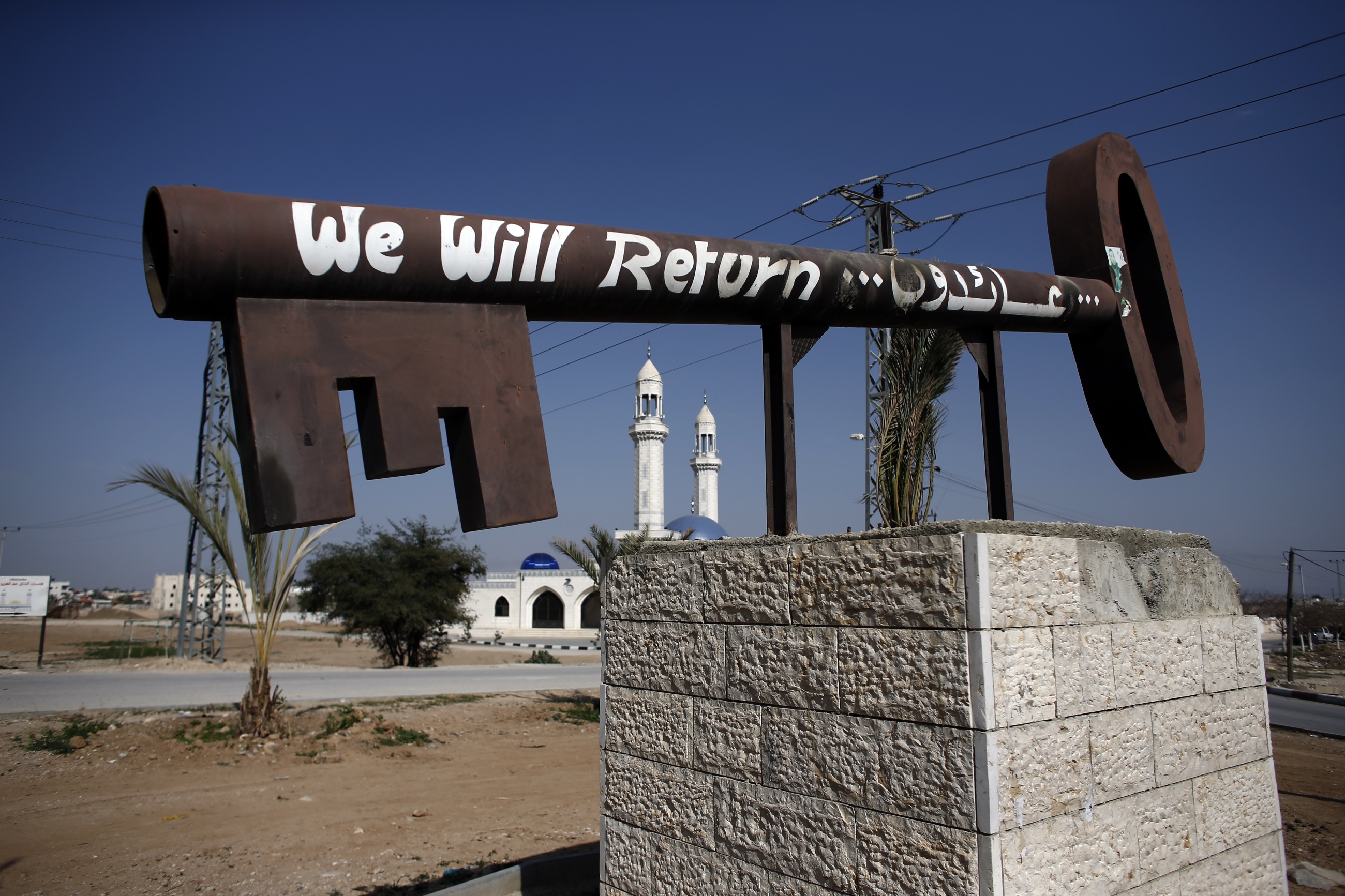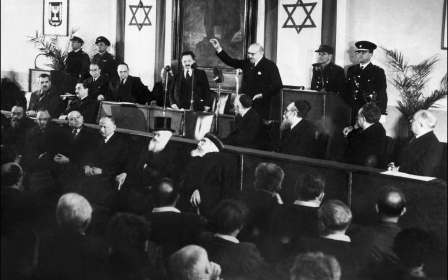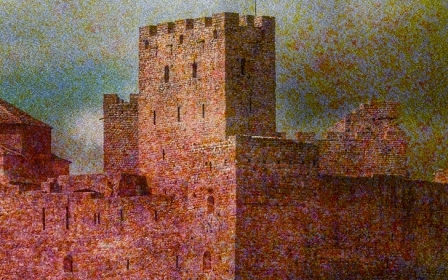Salman Abu Sitta: A Palestinian journey in pursuit of home

Anyone with an interest in the Palestine/Israel question is likely to have heard of Salman Abu Sitta. For decades his name has been a byword for a cogent, reasoned insistence on the legality, morality and practicality of the right of return of Palestinian refugees.
This book is the story of his personal journey, closely interwoven with that of his homeland.
From the opening sentence, we have a vivid picture of the countryside he knew as a boy – the Negev, now in southern Israel. Far from being a barren desert, waiting for the colonisers to come and bring it to life, we see rolling hills, meadows, orchards, and fields sown with wheat and barley, tended by families whose history was retold after sunset at the fireside, going back many generations.
Far from being a forgotten backwater, the Negev and Gaza were linked through a complex network of kinship and land ownership to Egypt and the wider Arab world.
The bright, adventurous little boy who would grow up to be a brilliantly successful engineer and tireless campaigner was born into a privileged family, 10 years before the Nakba ("Catastrophe") of 1948. His father was the sheikh of his community, an authoritative personality and a progressive thinker who as early as 1920 built a school for the local children. He was to ensure his own children acquired a higher education, even when impoverished by the loss of all his lands.
The Israeli commander responsible for the attack on Abu Sitta’s home village recalled in his memoirs entering the family home, an old two-storey house, later pillaged of its contents. He mentions “luxurious furniture, plentiful oriental and European clothes, a radio, a truck, a beautiful Bedouin sword made of silver, a large important archive of photos and documents, letters from Emir Abdallah [of Transjordan] and Hassan al-Banna, leader of the Muslim Brotherhood in Egypt; a lawyer’s certificate of one of the family members, Shakespeare’s Othello in English near Quran ...”
It is a far cry from the image later propagated by the Israeli government of an illiterate and rootless nomadic population. Even today the uprooting of the remains of the indigenous population continues.
Gradually, signs of the coming disaster intrude on the boy’s idyllic childhood. Talk at the hearth is now of Jewish terrorism against the British, the setting up of military posts near Beersheba, manned by Jewish militia in readiness for the coming onslaught. Jeeps mounted with machine guns are sighted in the area. Finally comes news of burning villages to the north.
The events of 1948 have been told elsewhere, but rarely with the immediacy and poignancy of this child’s-eye view. The terror, the chaos, the heroic but hopeless attempts at defence, the village being overrun, the belated and ultimately ineffectual military support from Egypt were all etched into his memory.
The family was able to regroup in Gaza, flooded with many thousands of refugees from all over southern Palestine, which had been heavily bombed from the air. Abu Sitta paints an unforgettable picture of hordes of virtually destitute people striving to recreate the social structures they had left behind, building small businesses, surviving thanks to close family networks. The Gaza Strip was only saved from being overrun by forces led by a Russian general, a veteran of the Red Army, by a combined force of Egyptians and Palestinians.
Stories of terrible massacres like that of Deir Yassin, or of the death march from Lydda, were rife. When he later came to research those events in detail, Abu Sitta uncovered accounts by Israeli soldiers like that of Ziv Zipper, involved in the massacre at Burayr. Zipper wrote in self-disgust:
“We broke their walls and incinerated their houses and broke and destroyed and smashed and killed that cold way, no thought at all about life or human beings or the meaning of feeling as we watched the bullets smash skulls and saw the brain ooze out of a bleeding horror that had once been a man. But there was no feeling! No hate or horror or disgust or pleasure or anything! Just killing stray dogs, or a sick donkey, or just squashing flies.”
In the immediate aftermath of the Nakba, Palestinians crossed the wavering Armistice Line to retrieve belongings, feed animals or water their orchards, in the belief that they would soon be able to return. If caught they were shot, or blown up by mines or booby-traps. Armed incursions into Gaza were common, including a bombing raid in 1955 in which 72 people died. The Suez debacle of 1956 gave Israel the opportunity of invading the Strip and killing up to a thousand of its inhabitants – a now almost forgotten footnote of Palestinian history.
The young Salman was lucky. His father was able to send him to Cairo to finish his primary and secondary education – with top marks throughout. Then thanks to president Gamal Abd al-Nasser’s decision to offer Palestinians free university education, he was able to study engineering, in the same faculty as the proto-revolutionary Yasser Arafat.
As Abu Sitta notes: “In the 1950s they became engineers, doctors and teachers who built up the Gulf States during their endeavour to develop their countries with the newly found oil wealth.” After completing a PhD in the UK, Abu Sitta was to become one of those engineers, establishing a highly successful company in Kuwait.
He was somehow able to combine his career with the real love of his life: detailed research into the history and geography of his homeland and its colonisers. From the 1960s he travelled widely, seeking out maps, aerial surveys and documents from the British mandate and the Ottoman era, and even from the Israel archives, thanks to help from sympathetic Israeli friends. He also amassed a huge amount of material from eye witnesses and inhabitants from every corner of pre-1948 Palestine.
Over decades these were painstakingly assembled into a monumental work, the Atlas of Palestine, and other major publications. The hundreds of villages destroyed by Israel to prevent the return of the refugees are shown in minute detail: every mosque, church, shrine, cemetery, cart track and well is marked, in addition to street maps of the towns and cities.
Abu Sitta’s account of his rediscovery of Palestine in the early 1990s is heartbreaking. Everywhere he finds attempts to rewrite or reinvent history, from the exclusively Jewish version of Jerusalem’s history being told to Japanese tourists to the Byzantine church now labelled “an ancient synagogue,” a painted menorah (the seven-candle lightstand) being imposed on the early Christian mosaics.
All of Abu Sitta’s research has led him to the conclusion that, far from being “full up,” Israel has plenty of land available for the rehousing of refugees in and around the towns and villages depopulated in 1948. He envisions a state of peaceful coexistence, after the demise of a racist ideology that bears the seeds of its own destruction.
Clearly inspired by his family motto “We persevere,” he succeeds in making a truly convincing case for the possibility of a lasting solution – based on justice.
"Mapping My Return: A Palestinian Memoir" by Salman Abu Sitta (American University in Cairo Press 2016).
New MEE newsletter: Jerusalem Dispatch
Sign up to get the latest insights and analysis on Israel-Palestine, alongside Turkey Unpacked and other MEE newsletters
Middle East Eye delivers independent and unrivalled coverage and analysis of the Middle East, North Africa and beyond. To learn more about republishing this content and the associated fees, please fill out this form. More about MEE can be found here.




